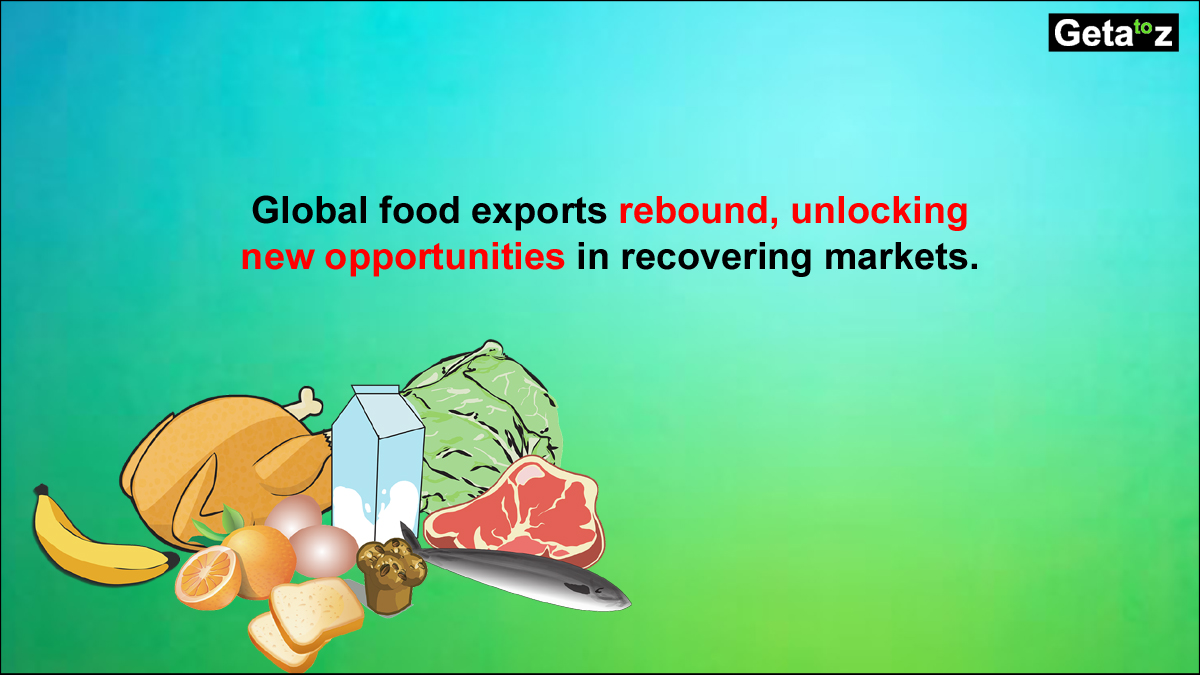Food and Beverage Exports from the United States
Updated: December 8, 2024

Exports Opportunities in the U.S. Food and Beverage Industry:
Potential Challenges for Food and Beverage Exporters:
The food and beverage export industry in the United States benefits significantly from genetic engineering and genetically modified organisms (GMOs). By genetically altering crops and animals, manufacturers can enhance production processes, improve product quality, and increase supply. However, concerns persist regarding the potential long-term health impacts of GMOs, as insufficient studies exist due to their relatively recent introduction.
Certain countries oppose GMOs and advocate for their ban, restricting the markets available to U.S. exporters using GMO-based products.
Additionally, the U.S. faces unique challenges in this sector. Recent labor market shifts have caused operational disruptions for businesses offering low wages, particularly in factories and other segments of the food and beverage supply chain. Another significant issue is the perishability of food products. Perishable items require specialized shipping conditions, such as climate control, to maintain quality during transit. Foods with very short shelf lives further complicate logistics, emphasizing the need for efficient supply chain management.
Different Food and Beverage Exports from the United States:
Soybeans:
Grown primarily in the upper Midwest, soybeans are the largest food and beverage export from the U.S., serving as a key ingredient in various food products.
Corn:
Corn ranks as a top U.S. export and has significantly influenced food industry trends. A surplus in corn production has led to increased use in processed products like high-fructose corn syrup, found in soda, candy, and more. Corn is exported in both raw and processed forms.
Nuts:
The U.S. dominates the global nut market, exporting tree nuts such as almonds, pistachios, pecans, and walnuts, primarily to Europe and Asia, including India and China.
Wheat:
Wheat is a major U.S. export, available in raw or milled forms. Different varieties are cultivated nationwide, reflecting diverse growing seasons. Heavily subsidized, wheat supports both domestic and international markets.
Pork:
As a leading meat export, pork plays a vital role in boosting the U.S. GDP and remains a staple of the agricultural export sector.
Poultry:
The U.S. is a top producer of poultry, including chickens, turkeys, and broilers. Although antibiotics and hormones have historically been used, regulations are evolving to restrict such practices.
Oils:
Soybean oil, often marketed as "vegetable oil," is the top food oil export from the U.S., contributing significantly to global food markets.
Beef:
Beef is a cornerstone of U.S. meat exports. States like Texas, Oklahoma, and Missouri lead in cattle farming, supplying domestic and international markets.
Grains:
Cereal grains, including sorghum, barley, and oats, are key exports. They are sold both raw and processed into products like flour and animal feed.
Dairy Products:
Dairy, particularly cow milk products, is a booming U.S. export. The sector has shown significant growth in recent years, meeting global demand.
Rice:
Half of the U.S.-produced rice is exported annually, creating jobs in rural areas and serving as a reliable food export industry.
Vegetables:
U.S.-grown vegetables such as tomatoes, potatoes, onions, and carrots are exported globally, contributing to agricultural diversity.
Fruits:
Fruits, including grapes, strawberries, peaches, and nectarines, are prominent U.S. cash crops with strong export demand.
Seafood:
The U.S. exports fish and shellfish, with seafood production concentrated in coastal states. Geography and climate influence the availability of species, such as cold-water lobsters in northern states and warm-water lobsters in the south.
Baked Goods:
Baked goods, including bread and processed foods, are flexible exports that can be produced anywhere, though climate and geography still play a role in production and logistics.